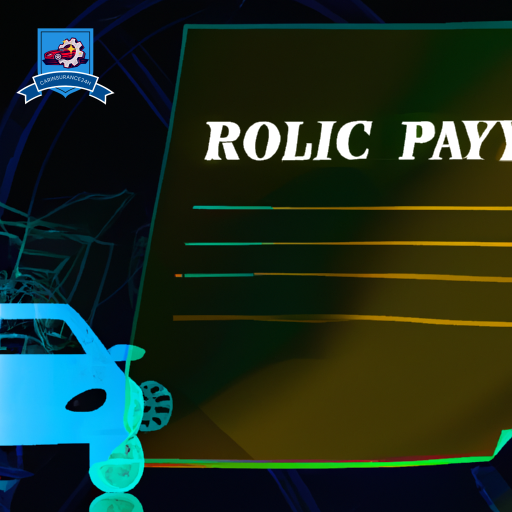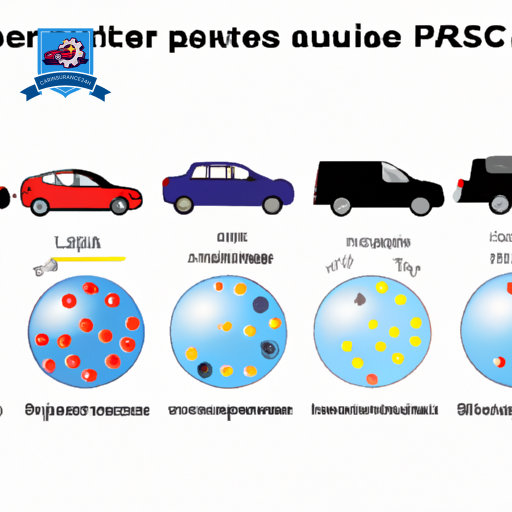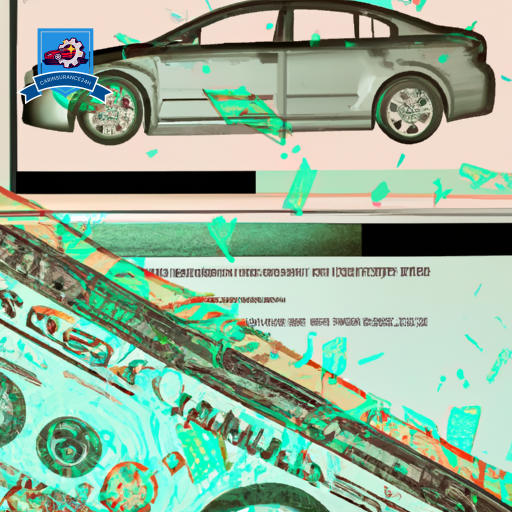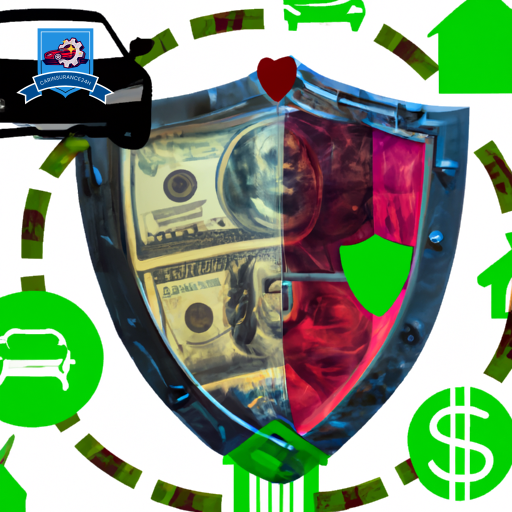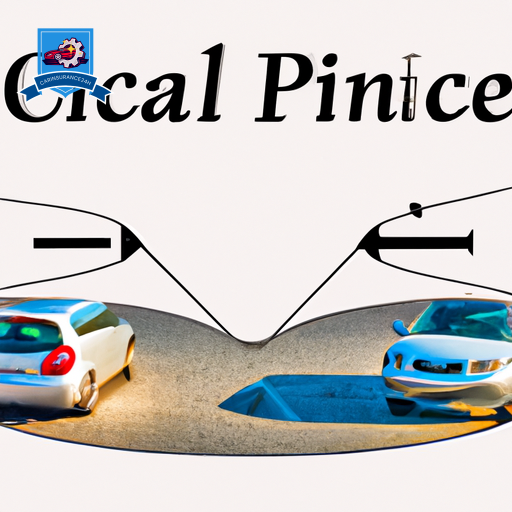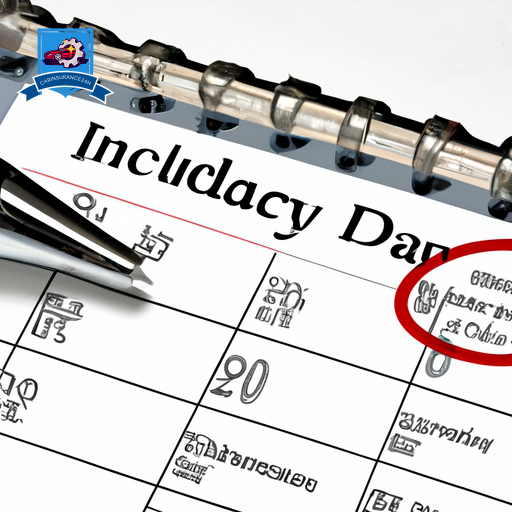Medical Payments Coverage (MedPay) in car insurance is a pivotal component designed to address the medical expenses incurred due to a vehicular accident, regardless of who is at fault. This coverage is instrumental in ensuring that immediate healthcare needs are met without the delays often associated with determining liability.
Understanding the nuances of MedPay, including its operational mechanism, coverage limits, and the distinct benefits it offers compared to Personal Injury Protection, is essential for policyholders aiming to make informed decisions about their insurance portfolio.
The intricacies of selecting appropriate coverage limits and the process for filing a claim highlight the complex landscape of auto insurance, where informed guidance becomes invaluable.
Definition of Medical Payments Coverage

Medical Payments Coverage, often abbreviated as MedPay, is an essential component of auto insurance policies that provides for the payment of medical expenses incurred by the insured and their passengers in the event of an accident, regardless of who is at fault. This facet of automobile insurance serves as a critical financial safeguard, making sure that immediate healthcare needs are met without the necessity of determining liability beforehand.
MedPay typically encompasses a broad spectrum of medical and funeral expenses. However, it is pivotal to acknowledge that there are specific coverage exclusions inherent to these policies. Importantly, MedPay does not extend to expenses related to injuries sustained through intentional harm or during the commission of a felony. Additionally, injuries incurred while operating the insured vehicle without the owner’s permission are similarly excluded. Understanding these exclusions is critical for policyholders to accurately assess the scope of protection afforded by their MedPay coverage.
The process of policy renewal presents an opportune moment for insured individuals to revisit and potentially adjust their MedPay provisions. This periodic review allows policyholders to make sure that their coverage levels remain commensurate with their evolving needs and circumstances. It is advisable for individuals to consult with their insurance provider to clarify any aspects of their coverage, including exclusions and the implications for policy renewal. This proactive engagement ensures that the MedPay component of their auto insurance policy continues to provide the best protection against unforeseen medical expenses arising from vehicular accidents.
Importance of Medical Payments Coverage

Understanding the significance of Medical Payments Coverage is important in ensuring financial stability following a vehicular accident. This specific component of car insurance plays a pivotal role in providing a safety net for policyholders and their passengers by covering medical expenses incurred due to a vehicular accident, irrespective of who is at fault. It is a manifestation of driver responsibility, highlighting a proactive approach to safeguarding against unforeseen medical costs, which can accumulate rapidly and impose significant financial burdens on individuals and families.
Incorporating Medical Payments Coverage into one’s insurance portfolio not only underscores a commitment to comprehensive protection but also potentially qualifies the policyholder for policy discounts. Insurance providers often recognize the inclusion of such coverage as indicative of a responsible and risk-averse driver, which may lead to reduced premiums. This synergy between driver responsibility and financial incentives underscores the multifaceted value of Medical Payments Coverage.
Furthermore, the importance of this coverage extends beyond individual benefits to foster a broader sense of responsibility and protection within the driving community. By ensuring that medical expenses can be promptly addressed without the immediate concern for payment, drivers contribute to a more secure and supportive road environment.
How Medical Payments Coverage Works

Understanding how Medical Payments Coverage operates within the domain of car insurance is vital for policyholders seeking thorough protection. This section will elucidate the coverage scope and limits, simplify the claim process, and provide an overview of eligible expenses.
These components are essential in appreciating the extent and utility of Medical Payments Coverage in mitigating financial burdens following an automobile incident.
Coverage Scope and Limits
In the domain of automobile insurance, Medical Payments Coverage serves as an essential component, designed to cover medical expenses for the insured and their passengers, regardless of who is at fault in an accident. This coverage is integral for mitigating the financial impact of accidents, offering a safety net that encompasses various medical expenditures. Policy discounts and deductible impact are pivotal considerations that influence the cost-effectiveness and appeal of securing such coverage.
| Factor | Influence |
|---|---|
| Policy Discounts | May reduce premiums, enhancing affordability. |
| Deductible Impact | Affects out-of-pocket costs, important for budgeting. |
| Coverage Limits | Determines maximum payout, essential for adequate protection. |
| Scope of Coverage | Defines what is covered, important for expectations. |
| Eligibility | Specifies who benefits, important for inclusivity. |
Understanding these aspects is fundamental for policyholders, ensuring they are adequately informed about their coverage parameters.
Claim Process Simplified
Having explored the foundational aspects of Medical Payments Coverage, it is pertinent to examine the claim process, which elucidates how policyholders can access the benefits after an accident. The procedure initiates with the policyholder promptly notifying their insurance provider about the incident, adhering strictly to the guidelines outlined in their policy documentation. This initial step is important and must be executed with precision, as it sets the stage for claim evaluation.
Subsequently, the insurance company requires a detailed account of the accident, supported by relevant documentation. This includes detailed descriptions of the accident scenarios, police reports, and medical records. The insurer assesses these documents against the policy terms to determine the validity and extent of the claim. This structured approach assures that policyholders receive the entitled benefits with minimal discrepancies.
Eligible Expenses Overview
Medical Payments Coverage in car insurance policies encompasses a variety of expenses incurred due to injuries sustained in an automobile accident, offering financial protection to policyholders and their passengers. Understanding the scope of eligible expenses and the associated payment methods is essential for maximizing the benefits of this coverage.
The following list delineates the primary aspects:
-
Medical Treatments: Includes hospital visits, surgeries, X-rays, and other necessary medical procedures.
-
Rehabilitation Costs: Covers physical therapy and other rehabilitation services essential for recovery.
-
Ambulance Fees: Addresses the costs associated with emergency medical transportation.
-
Funeral Expenses: In unfortunate events, this coverage extends to funeral expenses.
Coverage Limits and Costs

Understanding the specifics of coverage limits and associated costs is essential when selecting medical payments coverage in car insurance policies. Coverage limits define the maximum amount an insurance company will pay for covered medical expenses after a vehicular accident. These limits vary greatly across different policies and insurers, necessitating a thorough comparison by potential policyholders. It is imperative to choose a coverage limit that adequately reflects one’s financial situation and potential risk exposure. Opting for higher limits generally results in increased premiums, whereas lower limits might reduce the premium but also decrease the financial protection in the event of significant medical expenses.
The costs associated with medical payments coverage are influenced by several factors, including deductible amounts and policy discounts. Deductibles are the out-of-pocket costs that policyholders must pay before their insurance coverage begins to pay out. Policies with higher deductible amounts typically have lower premiums, as the policyholder assumes a greater portion of the risk. Conversely, lower deductibles may lead to higher premiums but offer more immediate financial relief following an accident.
Policy discounts play an important role in managing the costs of medical payments coverage. Insurers often offer discounts for various reasons, such as maintaining a clean driving record, bundling multiple insurance policies, or installing safety features in a vehicle. Policyholders should inquire about available discounts as they can greatly reduce the overall cost of coverage.
What Is Covered Under Medical Payments

Medical payments coverage typically steps in to cover a wide array of expenses related to injuries sustained in a vehicular accident, irrespective of who is at fault. This component of car insurance is designed to make sure that medical bills do not become a financial burden on the injured parties or their families. Coverage under this policy is broad, encompassing various medical and related expenses. The key aspects of what is covered can be detailed as follows:
-
Hospital Stays: One of the most significant expenses associated with vehicular accidents is the cost of hospitalization. Medical payments coverage contributes towards room charges, nursing care, and other hospital services, thereby alleviating a major financial concern following an accident.
-
Medical and Surgical Services: This includes costs for emergency services, surgical procedures, and follow-up visits. The aim is to cover the entire spectrum of medical care required to address injuries resulting from a car accident.
-
Prescription Drugs: Medication can represent a substantial portion of post-accident expenses. Coverage extends to prescription drugs, making sure that the cost of necessary medication does not impede the recovery process.
-
Rehabilitation Costs: Recovery from injuries often necessitates physical therapy or other forms of rehabilitation. Medical payments coverage provides for these services, supporting a detailed recovery journey.
Understanding the scope of medical payments coverage is important for policyholders, making sure that they can navigate the aftermath of a vehicular accident with confidence in their financial protection. This coverage plays a pivotal role in facilitating access to necessary medical care without the burden of out-of-pocket expenses.
Comparing Medical Payments to Personal Injury Protection

In the domain of car insurance, understanding the nuances between Medical Payments coverage and Personal Injury Protection (PIP) is imperative for informed decision-making.
These two types of coverage differ considerably in the scope of coverage they offer, their availability across various states, and the mechanics behind the disbursement of benefits.
A thorough comparison will elucidate these distinctions, aiding policyholders in choosing the most appropriate coverage for their needs.
Coverage Scope Differences
Exploring the differences between Medical Payments and Personal Injury Protection is essential for discerning their respective coverage scopes within car insurance policies. These distinctions significantly influence policy exclusions and deductible impacts, shaping the overall protection and financial implications for policyholders.
Key differences include:
-
Coverage Limits: Medical Payments typically offer lower coverage limits compared to Personal Injury Protection.
-
Scope of Coverage: Personal Injury Protection extends to broader scenarios, including lost wages and rehabilitation costs.
-
Deductible Requirement: Personal Injury Protection may require a deductible, whereas Medical Payments coverage often does not.
-
Policy Exclusions: Each policy has unique exclusions; Medical Payments might not cover certain injuries that Personal Injury Protection would, and vice versa.
Understanding these nuances is crucial for selecting the most appropriate coverage tailored to individual needs and circumstances.
State Availability Variances
Understanding the nuances between Medical Payments and Personal Injury Protection paves the way for discussing their availability across different states, which varies greatly and impacts policyholder choices. State regulations play a pivotal role in determining whether Medical Payments or Personal Injury Protection is offered, mandatory, or optional.
These regulations can influence the scope of coverage, including what types of injuries or accidents are covered and any coverage exclusions that may apply. Consequently, policyholders must navigate a complex landscape where the availability of these coverages can greatly differ from one state to another.
This variability necessitates a thorough understanding of state-specific insurance laws to make sure that individuals select the coverage that best meets their needs, taking into account any exclusions or limitations imposed by state regulations.
Benefit Payment Mechanics
How do Medical Payments and Personal Injury Protection differ in their benefit payment mechanisms, and what implications do these differences have for policyholders?
-
Payment Timelines: Medical Payments coverage typically processes claims and disburses funds more swiftly than Personal Injury Protection, facilitating quicker access to necessary medical care.
-
Coverage Scope: Personal Injury Protection often covers a broader range of expenses, including lost wages and rehabilitation services, which are not covered under Medical Payments.
-
Deductibles and Co-Pays: Medical Payments coverage usually does not require deductibles or co-pays, unlike some Personal Injury Protection plans, easing the financial burden on policyholders.
-
Coverage Exclusions: Both coverages have exclusions, but these vary significantly; understanding the specific exclusions of each can prevent unexpected out-of-pocket expenses.
Filing a Claim for Medical Payments Coverage

Filing a claim for medical payments coverage requires a clear understanding of the policy’s terms and a detailed submission of all relevant medical documents. This process is important for policyholders seeking reimbursement for medical expenses incurred as a result of a vehicular accident. The initial step involves the policyholder notifying their insurance provider about the incident in a timely manner, adhering to the policy’s stipulated deadlines for claim submissions.
Claim documentation is a critical aspect of this process. Policyholders are responsible for gathering and submitting all necessary medical records, bills, and receipts that detail the treatment received due to the accident. This documentation must be thorough, including dates of treatment, types of medical services rendered, and the associated costs. The insurance company may also require a statement from the treating healthcare providers, detailing the necessity of the treatments provided in relation to the vehicular accident.
Policyholder responsibilities extend beyond the submission of medical documents. They must make sure that the information provided is accurate and truthful, avoiding any discrepancies that could delay or jeopardize the claim. In addition, policyholders should maintain open communication with their insurance provider, promptly responding to any requests for additional information or clarification regarding the submitted claim.
The claim process for medical payments coverage is designed to be straightforward, yet it demands meticulous attention to detail from the policyholder. By adhering to the policy terms and fulfilling their documentation responsibilities, policyholders can navigate the claims process more efficiently, ensuring a timely resolution and reimbursement for their medical expenses.
Tips for Choosing the Right Coverage Limits

Having navigated the intricacies of filing a claim for medical payments coverage, it is equally important to ponder the selection of appropriate coverage limits. Determining the right coverage limits is crucial to ensuring that you and your passengers are adequately protected in the event of an accident, without overextending financially on premiums.
Here are four essential tips to guide you in choosing the right coverage limits:
-
Evaluate Your Personal Health Insurance: Begin by evaluating your current health insurance policy. If you have inclusive health insurance, you might require less coverage from your auto policy. However, remember that medical payments coverage can also assist with deductibles and co-pays that your health insurance does not cover.
-
Consider Your Driving Habits: If you frequently drive in areas with high accident rates or carry passengers regularly, opting for higher coverage limits can offer additional peace of mind and protection.
-
Understand Policy Discounts: Insurance providers often offer discounts for bundling policies or maintaining a clean driving record. Investigate these discounts as they can enable you to afford higher coverage limits without a considerable increase in your premium.
-
Leverage Deductible Strategies: For policies that have a deductible, selecting a higher deductible can lower your premium, potentially making it more feasible to increase your medical payments coverage limit. However, make sure the deductible is an amount you can comfortably afford in the event of a claim.
Choosing the right coverage limits for medical payments involves a delicate balance between your personal needs and financial capabilities. By carefully considering these aspects, you can select a coverage limit that provides adequate protection without undue financial strain.
Frequently Asked Questions
Can Medical Payments Coverage Be Used to Pay for Injuries Sustained by a Pedestrian Hit by My Vehicle?
Yes, medical payments coverage can be utilized to cover injuries sustained by a pedestrian hit by your vehicle, in compliance with pedestrian laws. This may influence your insurance premiums, depending on the policy’s terms.
Does Medical Payments Coverage Extend to Family Members Driving Another Person’s Car With Permission?
Exploring the policy scope of medical payments coverage is akin to charting a map through complex terrain. This coverage often extends to family members driving another’s car with permission, subject to the coverage limits specified.
Are There Any State-Specific Exclusions or Unique Provisions for Medical Payments Coverage That Drivers Should Be Aware Of?
State regulations may dictate unique provisions or exclusions for medical payments coverage, impacting coverage limits. Drivers should thoroughly research their state’s specific requirements to guarantee thorough understanding and compliance with these mandated insurance provisions.
How Does Medical Payments Coverage Interact With Health Insurance Policies, Especially in Terms of Deductibles and Co-Pays?
Medical payments coverage and health insurance policies primarily differ in policy comparison, coverage limits, deductibles, and co-pays. This intricately involves evaluating both to make sure thorough coverage without unnecessary overlap or underinsurance in critical care areas.
Can Medical Payments Coverage Be Applied to Expenses Related to Psychological or Emotional Therapy After an Accident?
Medical payments coverage may extend to expenses for psychological or emotional therapy post-accident, depending on the policy’s specifics. It is essential to review the coverage limits and therapy types included under such insurance provisions.

